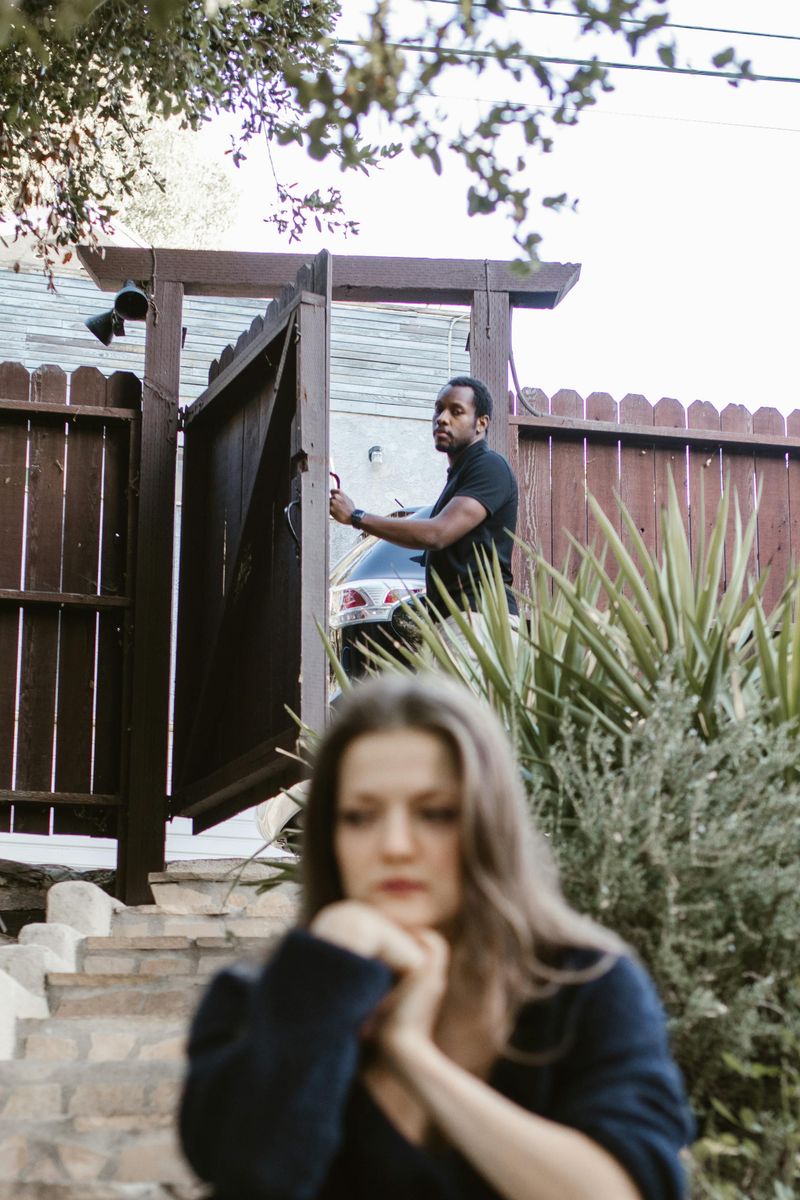Many women find themselves trapped in unhealthy relationships despite knowing something isn’t right. These patterns aren’t random—they’re often connected to specific personal traits that make breaking free extremely difficult. Understanding these characteristics can be the first step toward recognizing harmful patterns and making positive changes. Recognizing yourself in these traits doesn’t mean you’re flawed—it means you’re becoming aware.
1. Low Self-Worth

When you believe you don’t deserve better, mistreatment starts to feel normal. Women with diminished self-worth often rationalize harmful behavior with thoughts like, “At least he loves me sometimes” or “Nobody else would want me anyway.”
This belief system forms early, sometimes from childhood experiences or past relationship wounds. The dangerous cycle reinforces itself: poor treatment further erodes self-esteem, making escape seem even more impossible.
Breaking free starts with recognizing your inherent value exists regardless of someone else’s treatment. Small acts of self-compassion and surrounding yourself with supportive voices can slowly rebuild what unhealthy relationships have worn away.
2. The Paralyzing Fear of Being Alone

The empty side of the bed terrifies more than the emotional bruises from staying. Many women cling to dysfunctional relationships because the unknown future seems scarier than the familiar pain of the present.
Society amplifies this fear, portraying singlehood as failure rather than opportunity for growth. Friends in happy couples, family pressure, and milestone birthdays can trigger panic about “ending up alone” that overrides rational thinking about relationship quality.
Healing involves reframing solitude as self-discovery rather than punishment. Women who overcome this fear often report that their time alone became unexpectedly precious—a gateway to stronger future relationships built on want rather than need.
3. People-Pleasing

“Sorry” becomes the most-used word for women caught in the people-pleasing trap. Every opinion, need, or preference gets filtered through the question: “Will this upset him?” The constant accommodation creates a relationship where only one person truly exists.
People-pleasers mistake self-sacrifice for love, believing relationship success means making their partner happy at any cost. The root often stems from childhood experiences where approval was conditional on behavior.
Recovery starts by practicing tiny moments of authentic expression. Speaking one true preference daily—even something small like food choice—builds the muscle for bigger boundaries later. The relationship either adapts to this emerging authenticity or reveals its inability to support a whole, complete woman.
4. Boundary Blindness

Imagine a house without walls—that’s a relationship without boundaries. Women struggling with boundary-setting often can’t distinguish between healthy compromise and harmful surrender. The absence of clear limits invites escalating disrespect.
Physical boundaries get the most attention, but emotional boundaries suffer silent violations daily. These include having opinions dismissed, privacy invaded, or being expected to manage a partner’s emotions.
Learning to set boundaries feels uncomfortable at first—like using a muscle that’s never been exercised. Starting with small, non-confrontational statements like “I need an hour to myself tonight” builds confidence. Healthy partners respect these limits; toxic ones reveal themselves through their resistance to your emerging self-protection.
5. Hope’s Double-Edged Sword

“He’ll change when…” becomes the mantra that keeps countless women tethered to painful relationships. Each apology or momentary improvement reignites the belief that permanent transformation waits just around the corner. This hope acts like emotional superglue.
The pattern follows a predictable cycle: tension builds, incident occurs, apologies flow, temporary improvement follows, then slow regression to the starting point. Women often mistake these cycles for progress rather than recognizing the circular nature.
Facing reality requires distinguishing between possibility and probability. While people can change, meaningful transformation typically requires professional help, genuine accountability, and consistent effort over time—not promises made during moments of crisis or reconciliation.
6. Codependency

The morning begins with checking his mood to determine your own. Codependency blurs the line between two people until one person’s identity becomes completely wrapped up in the other’s needs, moods, and problems.
Unlike healthy interdependence, codependent women often pride themselves on being needed. “No one could take care of him like I do” becomes both prison and purpose. The relationship becomes a project of fixing, saving, or managing the partner rather than enjoying mutual support.
Recovery starts with rediscovering separate interests and rebuilding neglected friendships. Small decisions made without considering the partner’s reaction help reestablish personal identity. Professional support often proves crucial, as codependency’s roots typically reach deep into family patterns and early attachments.
7. Conflict Avoidance

The dishes pile up unwashed, yet saying something feels more dangerous than staying quiet. Women who fear conflict often develop elaborate internal dialogues while maintaining peaceful exteriors. This avoidance creates relationships built on performance rather than authenticity.
Childhood experiences frequently shape this trait. Growing up with explosive arguments or cold silent treatment teaches that disagreement equals danger. The brain learns to categorize all conflict as threatening, regardless of its actual severity.
Healing involves recognizing that healthy relationships require productive disagreement. Starting with “safe” topics helps build confidence. Writing thoughts before expressing them provides clarity. Most importantly, women must learn to distinguish between normal relationship friction and truly harmful conflict—a distinction that becomes clearer with practice and support.
8. The Echo of Past Trauma

Our brains are pattern-recognition machines, constantly scanning for familiar territory. For women with trauma histories, unhealthy relationship dynamics can trigger an unsettling sense of familiarity that the brain misinterprets as comfort rather than danger.
Childhood experiences create templates for what love “feels like.” If care came mixed with harm, the adult brain may struggle to separate these elements. This explains why accomplished, intelligent women sometimes choose partners who mirror childhood wounds.
Healing requires understanding how past experiences shape current choices. Therapy approaches like EMDR or trauma-focused cognitive behavioral therapy help process old wounds. Creating a “relationship resume” to identify patterns across different partners often reveals surprising connections between past trauma and current relationship struggles.
9. Dependence

The mortgage needs paying. The children need stability. The health insurance comes through his job. Practical considerations create invisible chains that bind women to unhealthy relationships, transforming leaving from an emotional decision into a logistical nightmare.
Financial dependence rarely happens overnight. It develops gradually through small decisions—leaving a job for childcare, combining accounts, or deferring career advancement for a partner’s opportunities. These reasonable choices in healthy relationships become traps in unhealthy ones.
Breaking free requires practical planning alongside emotional work. Building financial literacy, creating support networks, and developing income sources—even small ones—helps restore options. Many women report that addressing practical barriers ultimately proves easier than overcoming the emotional ones.
10. Romanticizing Struggle and Sacrifice

Fairy tales end when the real story begins. Women raised on romantic narratives often mistake intensity for intimacy and drama for passion. The belief that “love conquers all” keeps many trapped in relationships where love becomes an excuse for mistreatment.
Popular culture reinforces these harmful myths. Movies celebrate grand gestures after terrible behavior. Songs romanticize jealousy and obsession. These narratives teach that real love involves suffering, and that enduring hardship proves devotion.
Healthy love feels fundamentally different—more like peace than constant excitement, more like safety than drama. Women who escape this misconception often describe the revelation as shocking: “I didn’t know relationships could feel this easy.” Real love energizes rather than depletes, supports rather than constrains.

Comments
Loading…